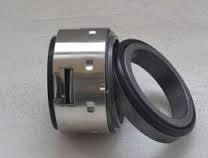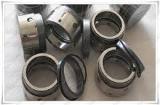Blanced Mechanical Seal
Balanced Mechanical Seal

A mechanical seal design in which the face contact area is counterblanced to reduce the amount of hydraulic force acting on the faces. The most common way to achieving "blancing" is by providing a step in the shaft or sleeve, and moving the seal face radially inward, therby reducing the hydraulic area under pressure. Blanced seal handle the higher pressure. The cost of blanced seal is normally greater than that for the unblanced.
Crane Type 1B and 2B (Balanced):

An adaptation ofthe Type 1 and 2 seal. The basic seal design is the same, but hydraulic balance of pressure against the sealing faces is effected by means of a step in the staft or sleeve. This allows face diameters to be lowered, thus reducing pressure on the seat by cutting down the effective hydraulic area.The Basic Pressure Rating is based on a standard Type 2 or Type 2B seal installed according to the criteria given in this data sheet and according to generally accepted industrial practices.
The Basic Pressure Rating assumes stable operation at 1800 rpm in a clean,cool, lubricating, non-volatile liquid, with an adequate flush rate. When used with the Multiplier Factors, the Basic Pressure Rating can provide a conservative estimate of the dynamic pressure rating.
Crane Type 9B and 9BT (Balanced):

Similar in materials to the Type 9. The design is modified to incorporate astep in the shaft or slevee to reduce effective hydraulic area for withstanding higher working pressure.
Type 9B Seals are standards for use where expensive and corrosive liquids are being processed.
- 1. Wedge construction of the secondary sealing element virtually eliminates leakage.
- 2. All components are held together by a snap ring in a unitized construction design which eases installation and removal.
- 3. Hydropad seal versions available.
- 4. For extremely corrosive, high pressure fluid applications, such as sulphuric, nitric, phosphoric or hydrochloric acids.
- 5. Compact design permits use in all types of rotating equipment, such as centrifugal pumps, mixers and agitators.
- 6. Lapping process results in high precision finish with optimal flatness.









